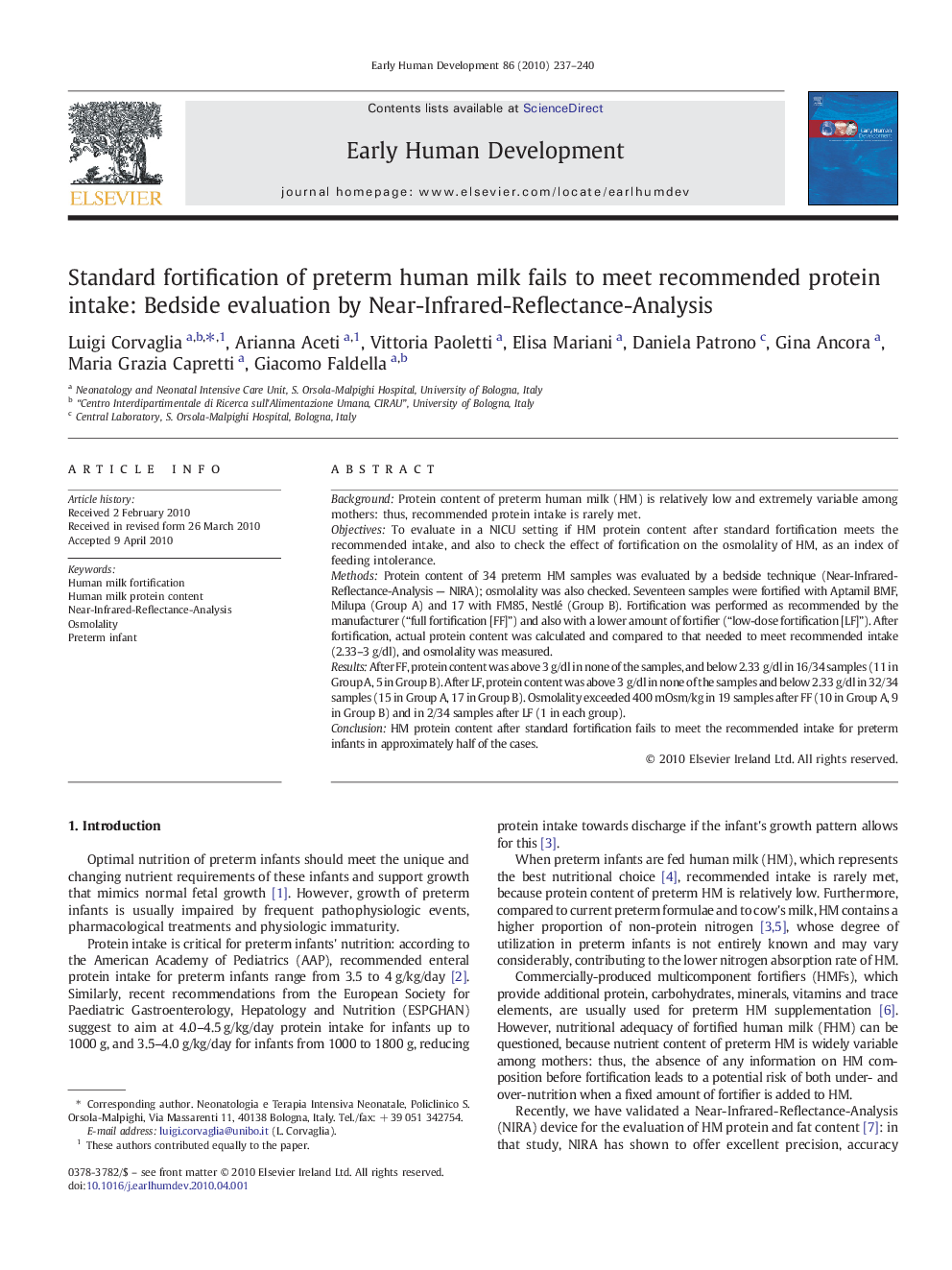| Article ID | Journal | Published Year | Pages | File Type |
|---|---|---|---|---|
| 3918460 | Early Human Development | 2010 | 4 Pages |
BackgroundProtein content of preterm human milk (HM) is relatively low and extremely variable among mothers: thus, recommended protein intake is rarely met.ObjectivesTo evaluate in a NICU setting if HM protein content after standard fortification meets the recommended intake, and also to check the effect of fortification on the osmolality of HM, as an index of feeding intolerance.MethodsProtein content of 34 preterm HM samples was evaluated by a bedside technique (Near-Infrared-Reflectance-Analysis — NIRA); osmolality was also checked. Seventeen samples were fortified with Aptamil BMF, Milupa (Group A) and 17 with FM85, Nestlé (Group B). Fortification was performed as recommended by the manufacturer (“full fortification [FF]”) and also with a lower amount of fortifier (“low-dose fortification [LF]”). After fortification, actual protein content was calculated and compared to that needed to meet recommended intake (2.33–3 g/dl), and osmolality was measured.ResultsAfter FF, protein content was above 3 g/dl in none of the samples, and below 2.33 g/dl in 16/34 samples (11 in Group A, 5 in Group B). After LF, protein content was above 3 g/dl in none of the samples and below 2.33 g/dl in 32/34 samples (15 in Group A, 17 in Group B). Osmolality exceeded 400 mOsm/kg in 19 samples after FF (10 in Group A, 9 in Group B) and in 2/34 samples after LF (1 in each group).ConclusionHM protein content after standard fortification fails to meet the recommended intake for preterm infants in approximately half of the cases.
